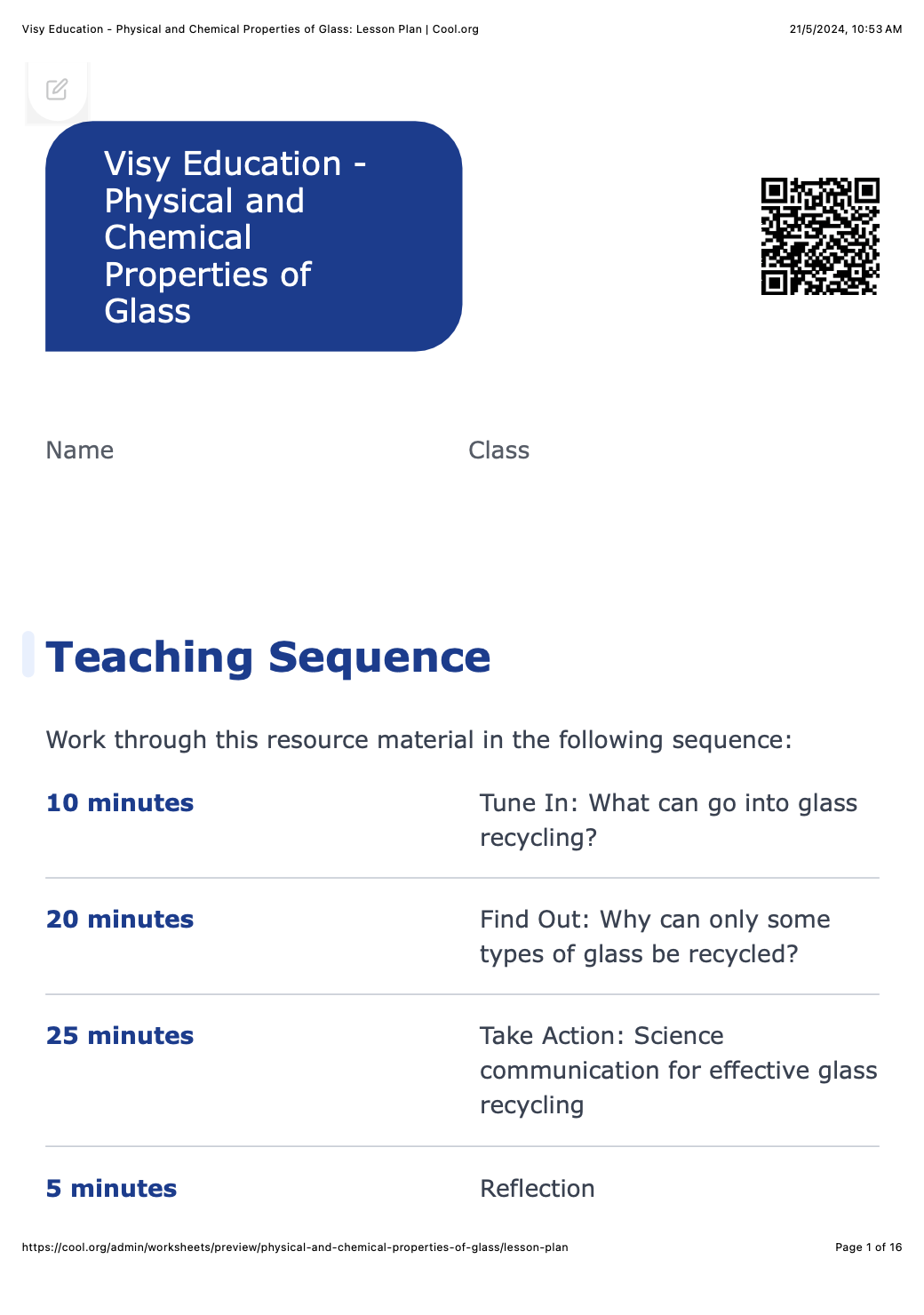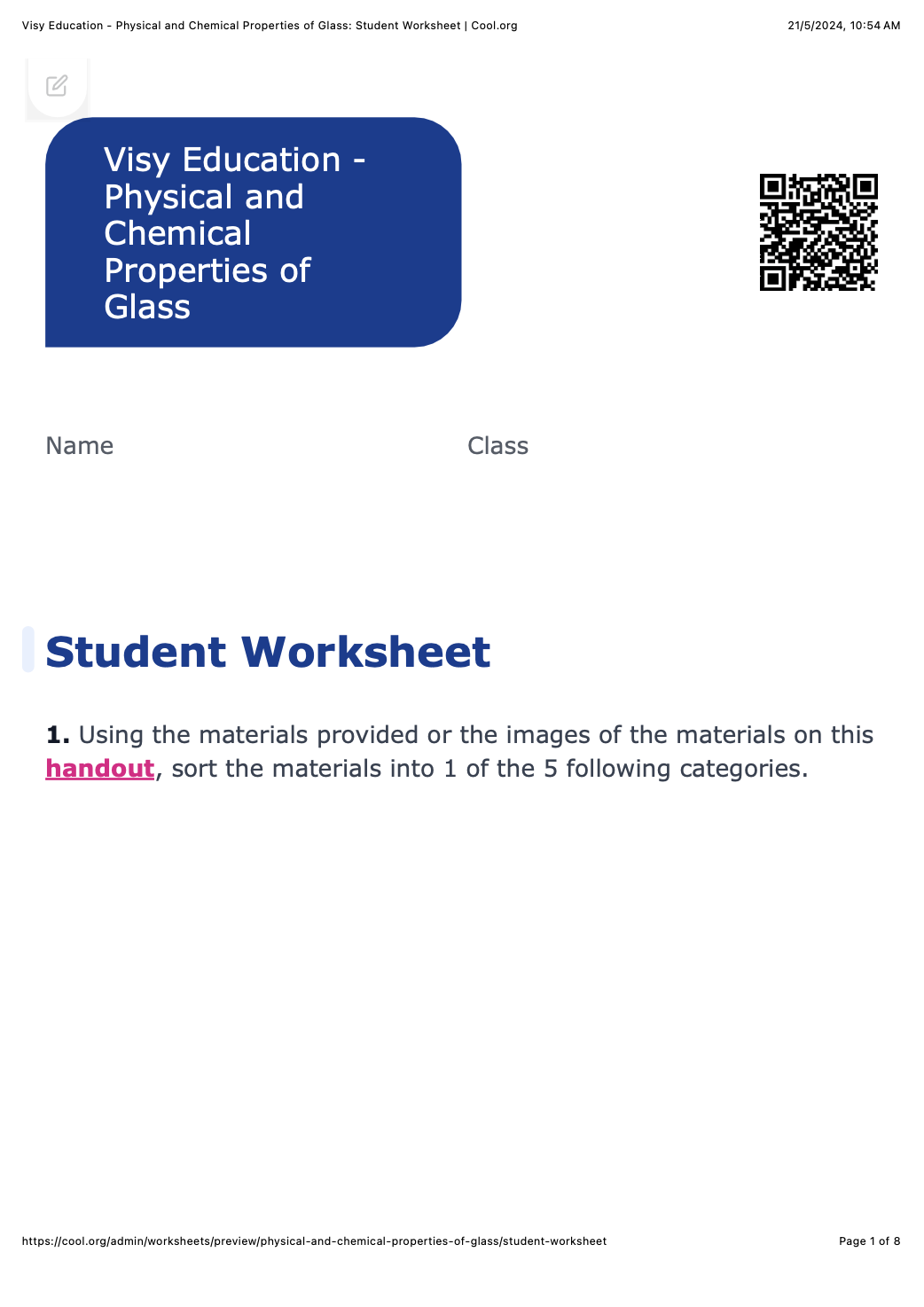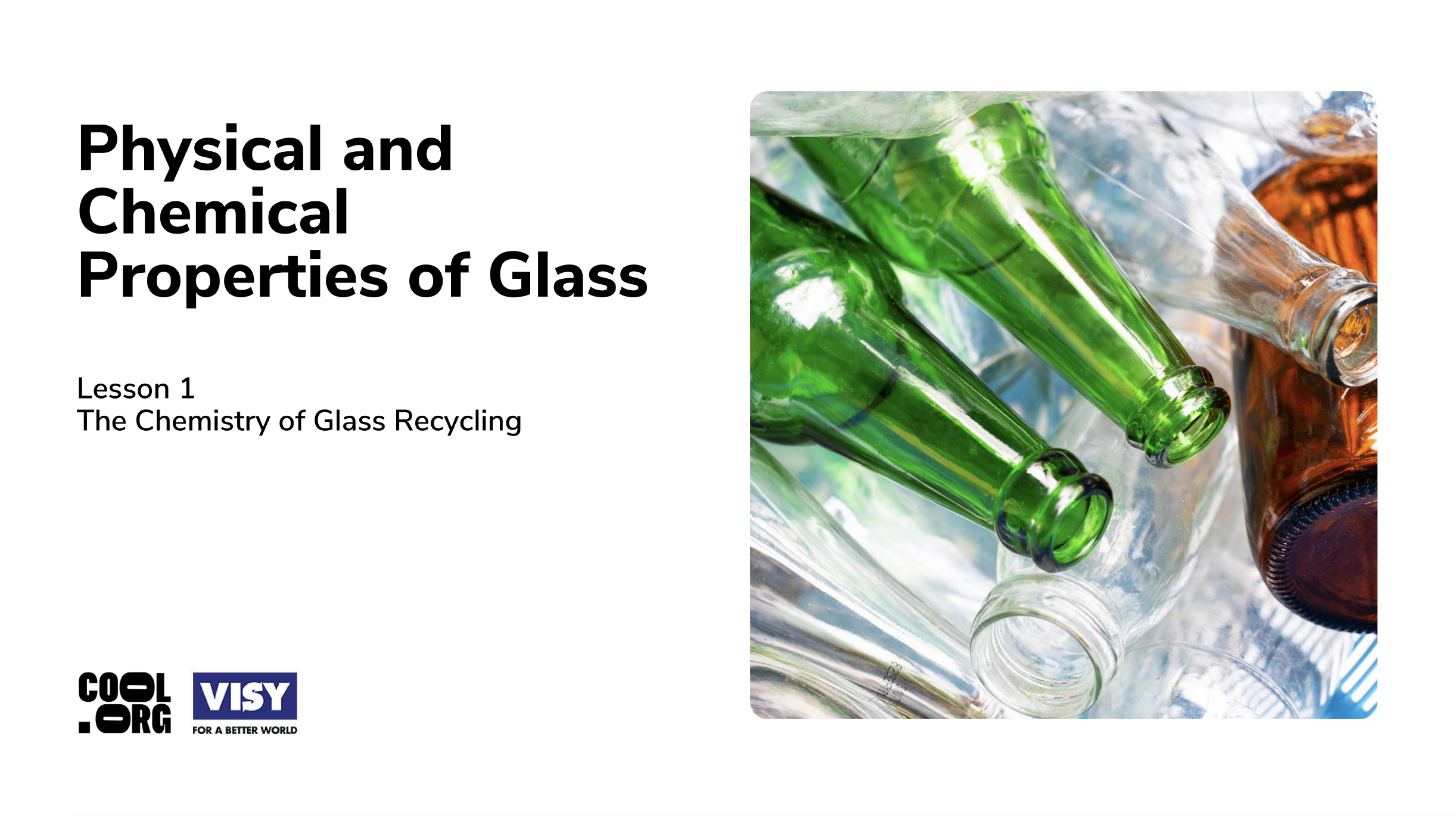Lesson summary
Students will explore the concept of glass recycling by identifying the properties of various types of glass and delving into how these properties affect their recyclability. Students will design a piece of science communication to raise awareness about the scientific principles behind the recyclability of glass.
Learning intentions:
Students will...
- identify the properties of different materials by understanding their structure and composition
- understand how the properties of different materials affect their recyclability.
Success criteria:
Students can...
- describe the properties of different materials in terms of their particle arrangement
- outline how the properties of different materials affect their recyclability
- design a piece of science communication to raise awareness around the importance of correct glass recycling.
Lesson guides and printables
Curriculum links
Select your curriculum from the options below.
Lesson details
Skills
This lesson is designed to build students’ competencies in the following skills:
- critical thinking
- community engagement
- curiosity
- global citizenship
Curriculum Mapping
Australian Curriculum (v9.0) content description: Year 7 Chemical Sciences
- Use the particle model to describe differences between pure substances and mixtures and apply an understanding of the properties of substances to separate mixtures (AC9S7U06)
Relevant parts of Year 7 Chemical Sciences achievement standards: Students can use particle theory to explain the physical properties of substances.
NSW Syllabus outcomes: Stage 4 Science
- Explains how the properties of substances enable separation in a range of techniques (SC4-SOL-01)
General capabilities: Critical and Creative Thinking, Personal and Social Capability
Cross-curriculum priority: Sustainability
Level of teacher scaffolding: Medium - facilitate class discussion, some explicit teaching of scientific concepts
UN Sustainable Development Goals
UN SDG 12: Ensure sustainable consumption and production patterns
- Target 12.5: By 2030, substantially reduce waste generation through prevention, reduction, recycling and reuse.
Resources Required
- Assortment of materials such as paper, cardboard, plastics, metals, glass jars and bottles, ceramic plates and bowls, glass cookware such as heatproof jugs, lightbulbs, drinking glasses, reading glasses, etc (images available in lesson plan if materials can’t be sourced)
- Device capable of displaying audiovisual material
Additional Info
This lesson has been developed in partnership with Visy. For over 70 years Visy has been committed to finding sustainable solutions for Australia and New Zealand’s recyclables and helping to reduce local landfills. Visy collects, receives and sorts paper, cardboard, glass, plastics, steel and aluminium from households, businesses and schools with the purpose of reusing these products in the re-manufacture of new packaging products.
Related Professional Learning
Teach the Big Picture of Sustainability
Quick Summary: Find out how to teach sustainability by opening your students’ minds to how different systems – environmental, social and economic – are interconnected.




Welcome back!
Don't have an account yet?
Log in with:
Create your free Cool.org account.
Many of our resources are free, with an option to upgrade to Cool+ for premium content.
Already have an account?
Sign up with:
By signing up you accept Cool.org's Terms and Conditions(Opens in new tab) and Privacy Policy(Opens in new tab).